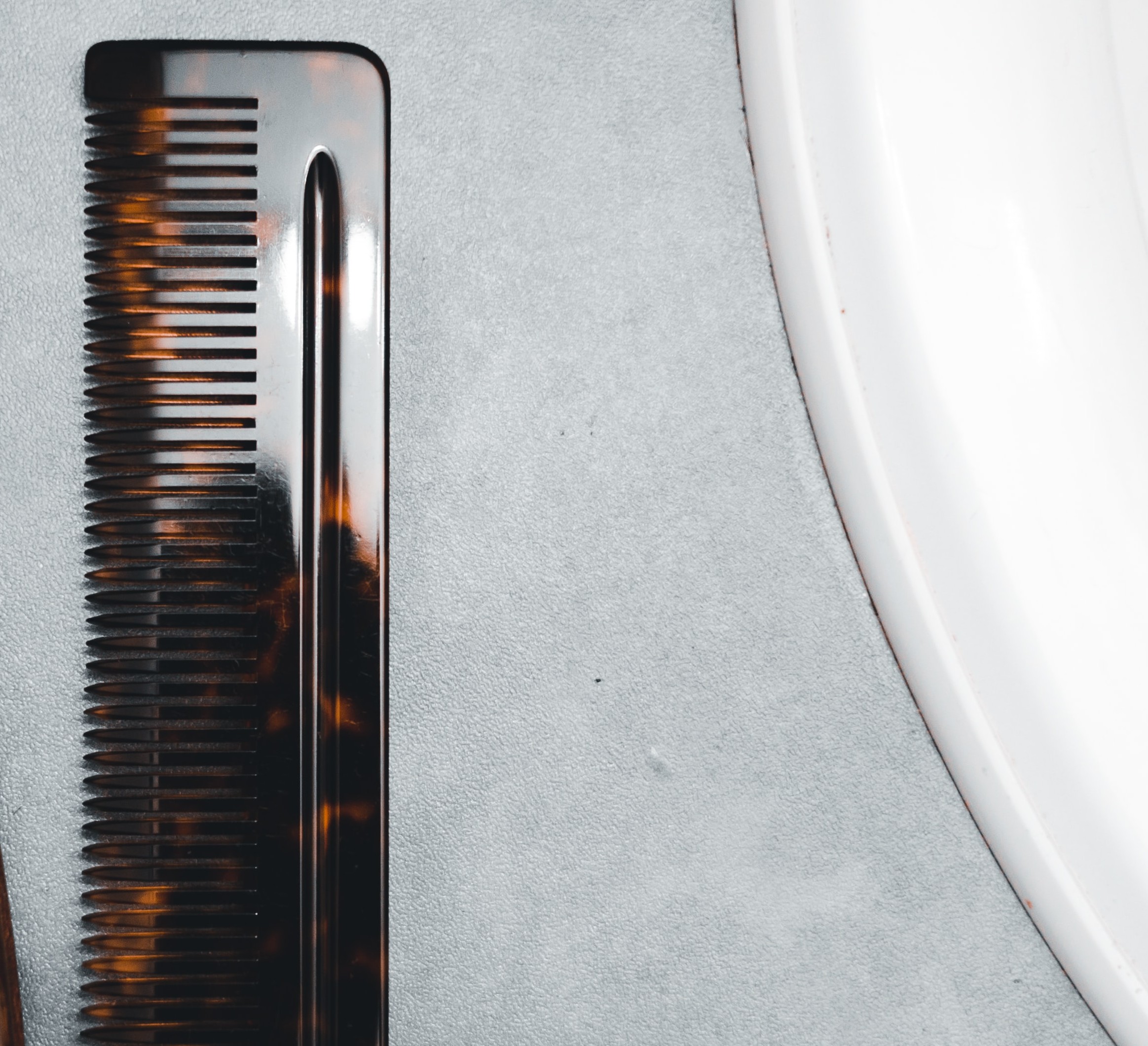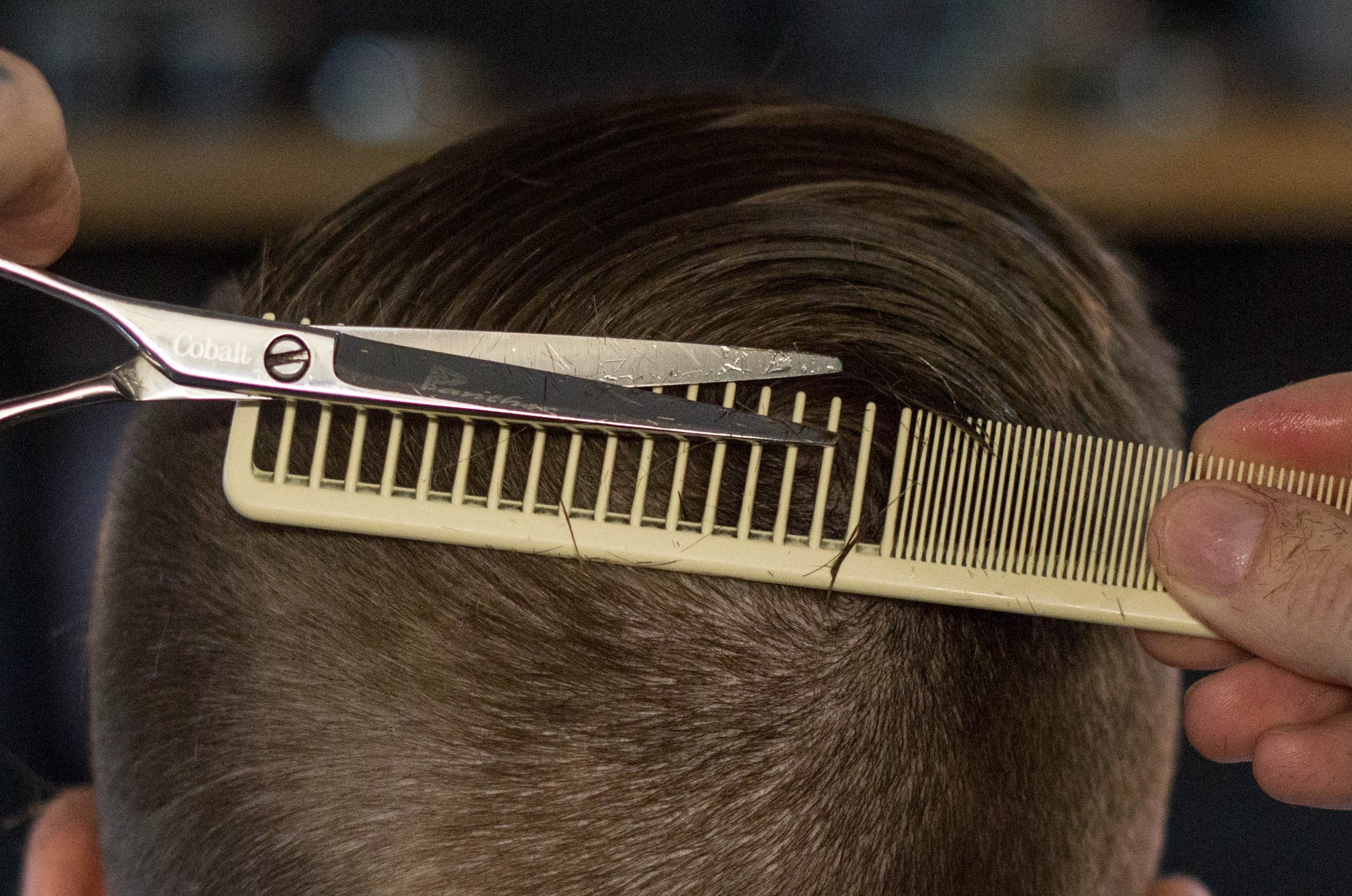Formulate user Paula has some questions about combs:
I was at Target yesterday and I wandered into the hair stuff aisle, you know, not the one with products but the one with all the brushes and combs. And I had this moment where I was just blown away by how many different types of combs there are. Which might sound silly, because it's such a trivial thing, but wow it's true! There are so many different combs! I would have expected such variation for hair brushes, but not for combs for whatever reason. Honestly it was weirdly overwhelming. So that's what leads me to my question: what are all these different combs, what are the different materials that they are made of, and what do they do? And why do some of them cost so much -- is the stuff that they're made of actually better for my hair?
Thanks for writing, Paula! We appreciate that you reached out, and that you're having such a mindful exploration of combs! We'll do our best to answer your questions.
What are combs made of?
Professional barber/beard enthusiast Russel Stanley shares that there are five main materials that combs are made of: horn, wood, metal, cellulose acetate, and plastic. The materials of the combs often dictate how expensive they are. In Stanley's experience, the more expensive materials typically create a superior comb.
Horn
Horn is Stanley's personal favorite. "Horns make the best beard comb, thanks to their extreme smoothness when they touch your hair and the toughness of the material. Another plus is they don't produce static electricity." The lack of static can help reduce frizz and flyaways when styling hair.
If sustainability is important to you, horns also have the added benefit of being made of natural materials. While they're not as sustainable as a bamboo comb, ethically made horn combs (IE: those made of horns that have naturally fallen off of wild animals) are overall better for the environment than plastic combs.
Still, horn combs aren't for everyone: "On the downside, they tend to be very expensive and they are not an option if you insist on buying vegan stuff." Horn combs also have to be carefully maintained and kept dry so they do not warp or crack. Thus, they can't be used to style or detangle wet hair, since doing so would compromise the comb's structural integrity.

Wood
If a horn comb is out of the question for you, Stanley recommends a wood comb. "Wooden and horn-based combs are made using the hand-cut process, which makes them safer and their teeth much smoother." While a machine made comb might be sharp and contain imperfections, a hand made comb is smoothly sanded and cut, so they don't tear the hair.
Similar to horn combs, wood combs are less likely to irritate sensitive scalps or tear hair. The smooth teeth gently massage the scalp while detangling, increasing blood flow to hair follicles.
"Wood is a popular choice because it is affordable, doesn't produce static electricity, and looks very cool. But wood doesn't like humidity and should not be washed with water. Cleaning one can be a bit of a hassle, especially if you use a lot of oil/balms." Similar to horn, wooden combs also can't be used to detangle wet hair, since the material can be easily warped.
Also, not all types of wood comb are created equal. Some woods are stronger than others, contain additional antifungal properties, and/or smell better when being used.
Sandalwood, for example, is known for its pleasant sweet spice. When used in combination with a sandalwood scented product, the experience of grooming can feel more like a pleasure than a chore. Neem wood, meanwhile, contains anti-inflammatory and antifungal properties, in addition to being a strong and durable material.
Metal
If your primary comb struggle is durability and you want to save money, a metal comb might be your best move.
Staley shares: "Metals combs score highly when it comes to durability, but produce a lot of static electricity. If you struggle a lot with taming your hair, these combs can make an already tough job even harder. But otherwise, they offer an excellent mid-tier option."
Metal combs, particularly stainless steel combs, can also be useful for individuals with allergies, since they're less likely to irritate and aggravate the skin. Stainless steel combs can also handle the heat involved with blow drying, so they are a good tool for heat styling.
Plastic combs
Stanley is not a fan of plastic combs: "Plastic combs are very cheap, but that is probably the only positive thing about them." He says that they break easily, and can scrape and damage the skin and hair.
Cellulose Acetate
As an alternative to plastic, Stanley recommends cellulose acetate: "Cellulose acetate combs resemble plastic but are in fact made of a superior raw material that will give you an experience comparable to horn-based combs."
Cellulose combs are less fragile than plastic combs, though they're not as durable as metal combs. They are particularly useful for heat styling, as they are heat resistant and will not melt. They are also resistant to chemicals, so they are good for individuals who use a variety of styling products.
Still, cellulose acetate combs aren't perfect. Though they're biodegradable, cellulose acetate combs take a long time to break down, far longer than horn combs or wooden combs. They also break somewhat easily if dropped, so they must be used with caution.

What are the different kinds of combs, and what do they do?
According to hairstylist Monica Davis, there are many, many different types of combs, probably too many to review in a single blog post. However, most of them fall under a few broader categories:
Barber comb with fine and wide-tooth sections on different ends: Barbers use the wider teeth for longer sections of hair, and the more narrow teeth for shorter sections of hair. Per Monica: "Barbers and hairstylists use them as a guard and guiding."

Fine-tooth comb: This type of comb has small teeth that are close together. Per Monica: "A good option for creating super-neat hairstyles. It won't help you deal with thick hair but can tame fine hair quite well"
Pick comb: This type of comb is flat and square-shaped, like a painter's brush but with harder teeth. Per Monica: "It's usually used by people with thick and frizzy hair as the thicker and wider teeth deal with them much better."
Rake comb: This comb has teeth that are extra wide. It often has a handle, making the entire comb look F shaped. Per Monica: "This type is one of the best for detangling with minimal pain. Move this comb slowly and hold the hair at the roots when you rake through the lower parts."
Teasing comb: "This rake type is very useful if you have thin hair and want to add some texture and volume. The thin metal teeth 'cooperate' with thin hair very well. Run through each strand 5-10 times for the best result."
Wanna learn more about the ins and outs of haircare? Here's what you should read next:
"My Hair Is Naturally Curly But Won't Curl Anymore"
5 tips for getting your natural curls back
Flyaway Hairs: How To Tame 'Em
Buh bye, flyaways!
Curly Hair & Humidity
Your how-to guide for dealing with curly hair in the humidity.
Oil Training Hair: Q&A With A Dermatologist
Everything you need to know about oil training your hair
Curling Hard To Curl Hair: A How-To Guide
Let's curl that hair!
Two different ways to straighten natural hair




